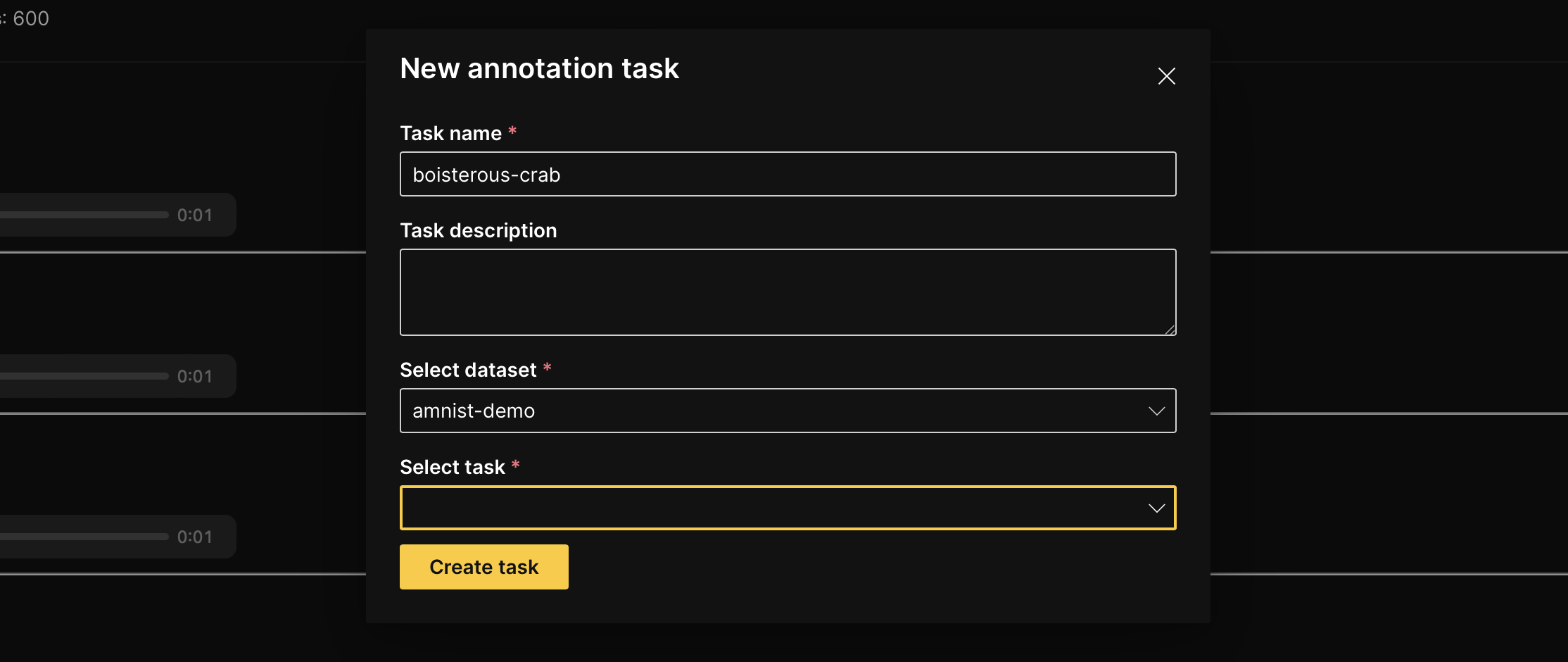Create an annotation task
Overview
You need to create an annotation task to annotate (label) a dataset.
An annotation task refers to labeling data in a manner that makes them suitable to support an array of deep-learning problem types. This process can, for example, involve adding bounding boxes to images where you can attribute labels to each box.
- To learn how to download your annotated dataset, see Download an annotated dataset.
- To learn about supported annotation tasks, see Supported annotation tasks.
Instructions
To create an annotation task, consider the following instructions:
- On the H2O Label Genie navigation menu, click Annotation tasks.
- Click New annotation task.
- In the Task name box, enter a name for the annotation task.
- In the Task description box, enter a description for the annotation task.
- In the Select dataset list, select a dataset (the dataset you want to label).
- If the data type of the selected dataset is text, proceed with the following instructions:
- In the Select task list, select the type of annotation you want to create (for example, classification, entity recognition, etc.).
- In the Select text column list, select the text column in your dataset (data).
- If the data type of the selected dataset is image or audio, proceed with the following instructions:
- In the Select task list, select the type of annotation you want to create (for example, classification, regression, etc.).
- If the data type of the selected dataset is text, proceed with the following instructions:
- Click Create task.
Note
After creating a new annotation task, specify an annotation task rubric in the Rubric tab. An annotation task rubric refers to the labels (for example, object classes) to use when annotating a dataset. For example, after creating a new annotation task for an object detection dataset, you have to specify the object classes to use when labeling the dataset in the annotation task rubric. To learn more, see Specify an annotation task rubric.

- Submit and view feedback for this page
- Send feedback about H2O Label Genie to cloud-feedback@h2o.ai